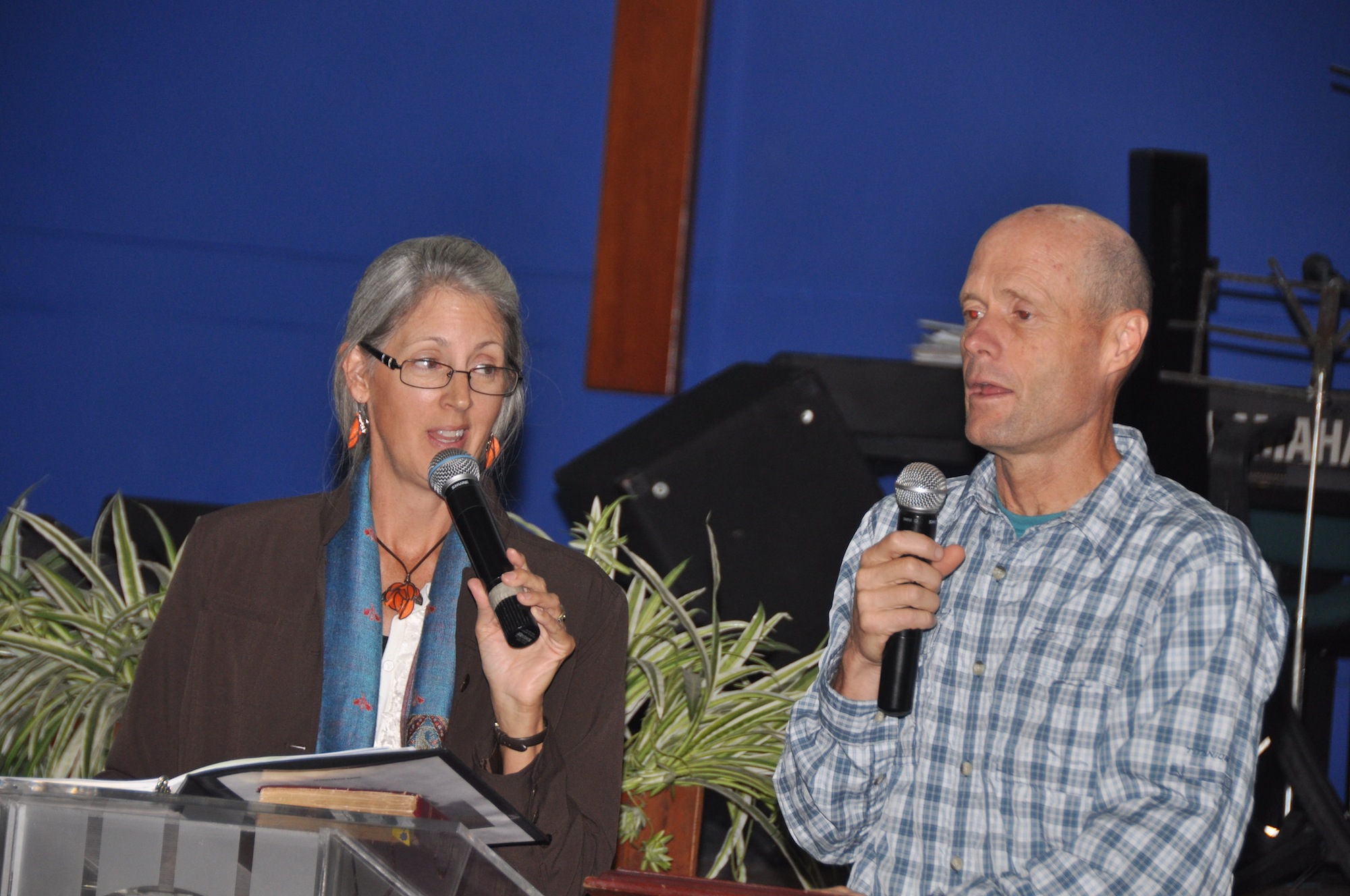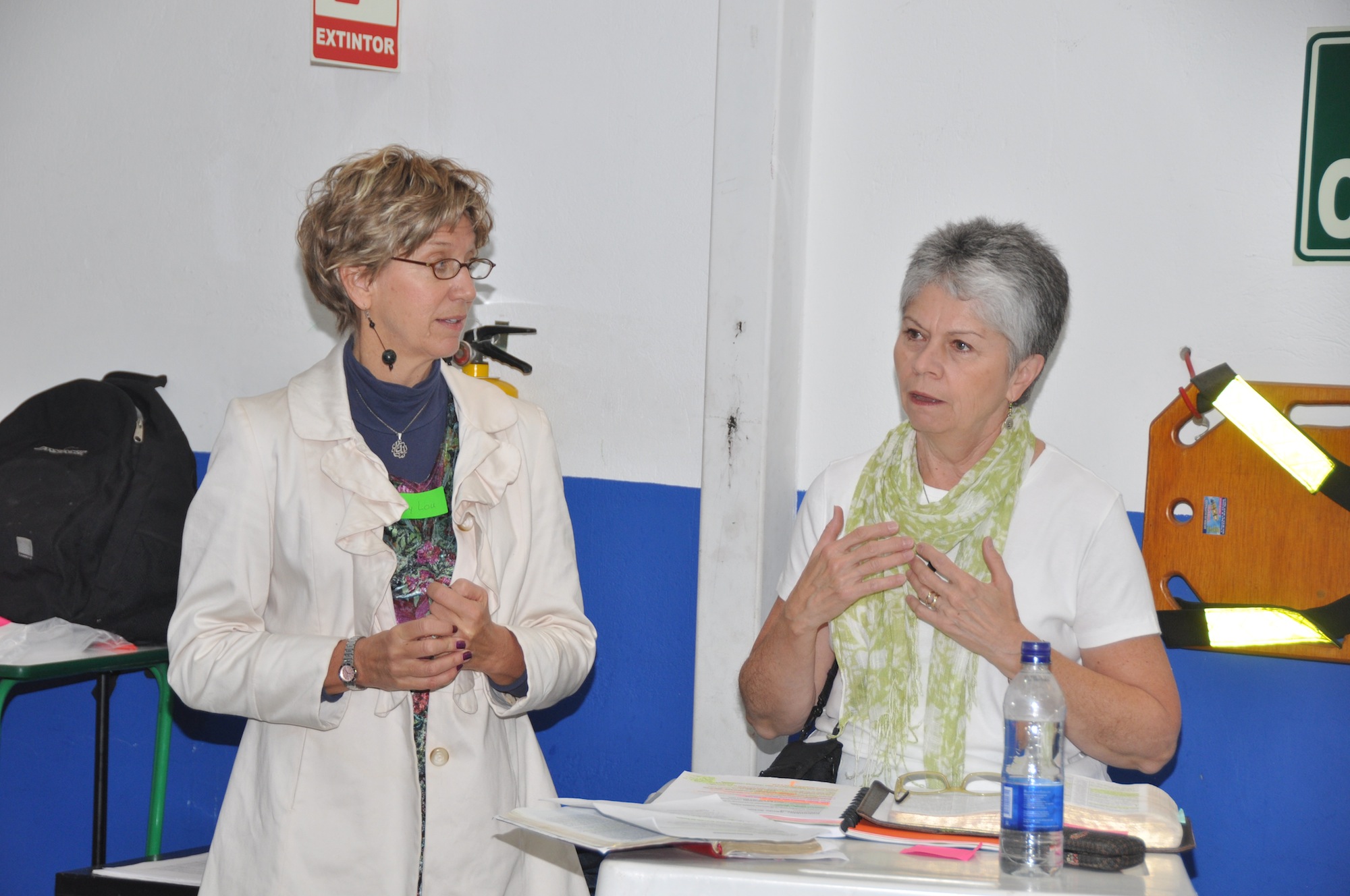Often we are asked to interpret for those who visit in Colombia. Thankfully, almost all of the time it has been worth the work to interpret what is being said. Seldom do we find ourselves interpreting something that we do not want to say out loud.
For two weeks in September we hosted seven members of Abide Ministries who put on a School of Prayer and a School of Ministry. Everything that the members of this team said and taught was worth interpreting. The Colombians often were hanging on every word that was spoken. That is a good feeling for an interpreter and it is a good spot to be in.
It is important to get into a good rhythm as an interpreter with the person for whom you are interpreting. It doesn’t work well if the audience is waiting for long periods of time before they hear what the person is saying. The rhythm needs to keep moving steadily and smoothly so that the audience, as well, is into a rhythm of listening. You don’t want long sentences and you don’t want two word phrases. Both of those kinds of sentences don’t provide a constant rhythm and can be hard to listen to. What an interpreter needs is enough of the sentence so that any grammatical changes that need to be made in the other language to make a comprehensible thought can be made with a smooth transition and with understanding.
It is important for the speaker and the interpreter to address the audience—that is, to look at the audience when they are speaking. Often times it is tempting for the interpreter to look at the speaker, and vice versa, to make sure that they understand what is being said, the expression on the face of the speaker, and the voice volume and tone. However, you want the audience to be looking at both of you and not just at the speaker or at the interpreter. So, you must address the audience, and not one another (speaker and interpreter).
We believe it is important to try to mimic the actions of the speaker, especially when the actions of the speaker enhance the message. Sometimes it is hard to stay with a speaker and mimic their movements, especially when they move a lot. But, the expressions put in the right place of the interpretation add a lot to the message. Especially when you recognize that the actual words spoken are very minimal in their communication content if the expressions, both facial and body expressions, and volume are not included in the interpretation.
It is important for the speaker and the interpreter to speak beforehand and to be on the “same page” so that there are few surprises and so that the interpreter knows where the speaker is going and can help the speaker get there with the interpretation. This takes work and preparation. Relying on past experience and success in interpretation is an assumption that hurts more than it helps because the speaker may surprise you with something that you are not ready for. Colloquialisms don’t always translate from one culture or language to another. Jokes or dry humor are a challenge to communicate. Scattered messages—those that jump all over the place and don’t have a common thread of thought and direction—are a real challenge to interpret and for the listening audience. It is hard enough to hang in there with a message being interpreted, let alone when what is being said involves many pauses and is hard to follow the thought and plot line.
When it all comes together, when there is good rhythm, when the message is worth listening to, in spite of the time lag, when communication actually takes place, it is a great place to be in. This is true both for the audience and for the speaker and interpreter. This place is where we were for two weeks in September with the Abide Ministries team.




